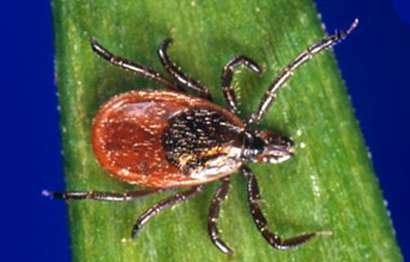Fewer deer may mean less Lyme disease

Since white-tailed deer serve as the primary host for the adult blacklegged tick (Ixodes scapularis)—the vector for Lyme disease—scientists have wondered whether reducing the number of deer in a given area would also mean fewer cases of Lyme disease. Now, after a 13-year study was conducted, researchers in Connecticut have found that reduced deer populations can indeed lead to a reduction in Lyme disease cases. The results of their study are published in the Journal of Medical Entomology.
The researchers surveyed 90–98% of all permanent residents in a Connecticut community from 1995 to 2008 to document their exposure to tick-related diseases and the frequency and abundance of deer observations. After hunts were initiated, the number and frequency of deer observations in the community were greatly reduced, as were resident-reported cases of Lyme disease.
The number of resident-reported cases of Lyme disease per 100 households was strongly correlated to deer density in the community, they found. Reducing deer density to 5.1 deer per square kilometer resulted in a 76% reduction in tick abundance, a 70% reduction in the entomological risk index, and an 80% reduction in resident-reported cases of Lyme disease.
"We found that reducing deer density by ≥87% resulted in a significant reduction in tick abundance, nearly a 50% reduction in tick infection rate, and an 80% reduction in resident-reported human cases of Lyme disease," the authors wrote. "Our study demonstrated that deer populations can be manipulated to reduce human interactions with deer, infected nymphal ticks, and human risk of contracting Lyme disease."
"Reducing deer populations to levels that reduce the potential for ticks to successfully breed should be an important component of any long-term strategy seeking to reduce the risk of people contracting Lyme disease," they concluded. "Additionally, good hunter access to deer habitat and a wide variety of management tools (bait, unlimited tags, incentive programs) are important components of a successful deer reduction strategy."
More information: Journal of Medical Entomology, esa.publisher.ingentaconnect.c … 51/00000004/art00007


















